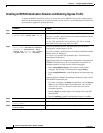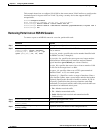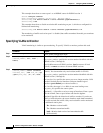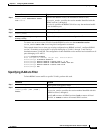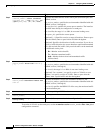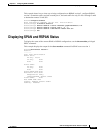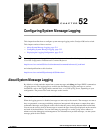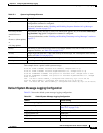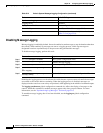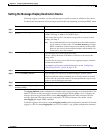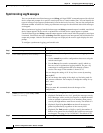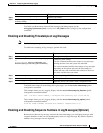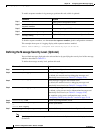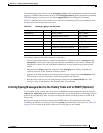
52-2
Software Configuration Guide—Release 15.0(2)SG
OL-23818-01
Chapter 52 Configuring System Message Logging
Configuring System Message Logging
You can access logged system messages by using the switch command-line interface (CLI) or by saving
them to a properly configured syslog server. The switch software saves syslog messages in an internal
buffer on the switch. If the switch fails, the log is lost unless you had saved it to flash memory.
You can remotely monitor system messages by viewing the logs on a syslog server or by accessing the
switch through Telnet or using the console port.
Configuring System Message Logging
These sections describe how to configure system message logging:
• System Log Message Format, page 52-2
• Default System Message Logging Configuration, page 52-3
• Disabling Message Logging, page 52-4
• Setting the Message Display Destination Device, page 52-5
• Synchronizing Log Messages, page 52-6
• Enabling and Disabling Timestamps on Log Messages, page 52-7
• Enabling and Disabling Sequence Numbers in Log Messages (Optional), page 52-7
• Defining the Message Severity Level (Optional), page 52-8
• Limiting Syslog Messages Sent to the History Table and to SNMP (Optional), page 52-9
• Configuring UNIX Syslog Servers, page 52-10
System Log Message Format
System log messages can contain up to 80 characters and a percent sign (%), which follows the optional
sequence number or time-stamp information, if configured. Messages are displayed in this format:
seq no:timestamp: %facility-severity-MNEMONIC:description
The part of the message preceding the percent sign depends on the setting of the
service sequence-numbers, service timestamps log datetime,
service timestamps log datetime [localtime] [msec] [show-timezone] command or the
service timestamps log uptime global configuration command.
Table 52-1 describes the elements of syslog messages.



